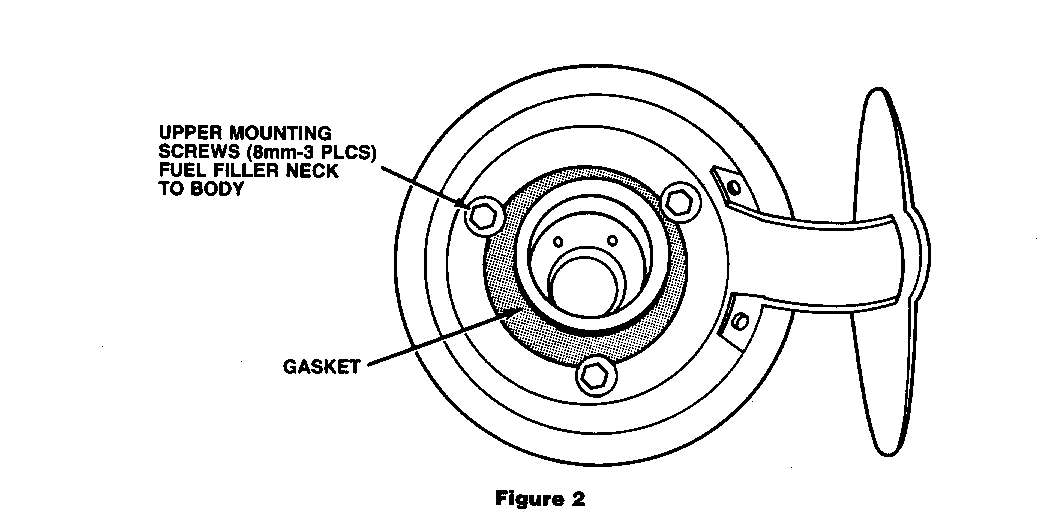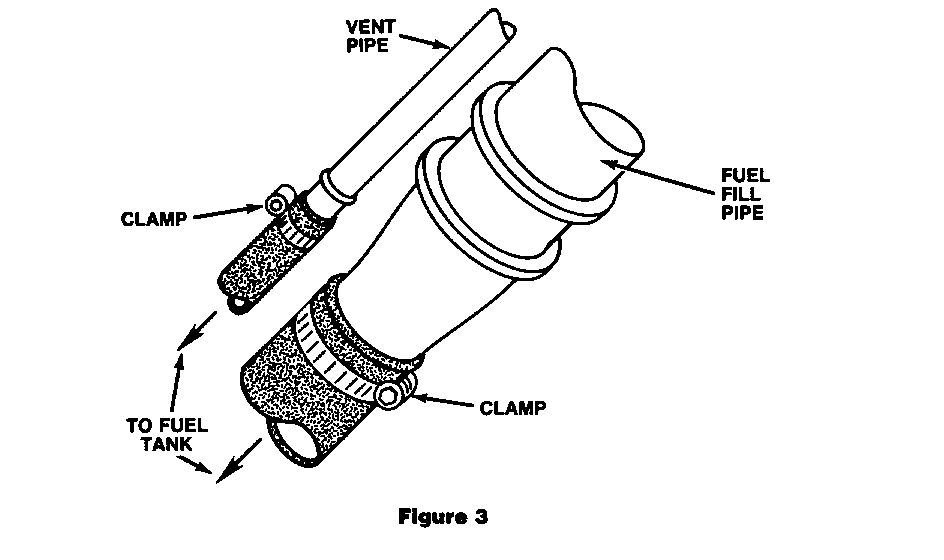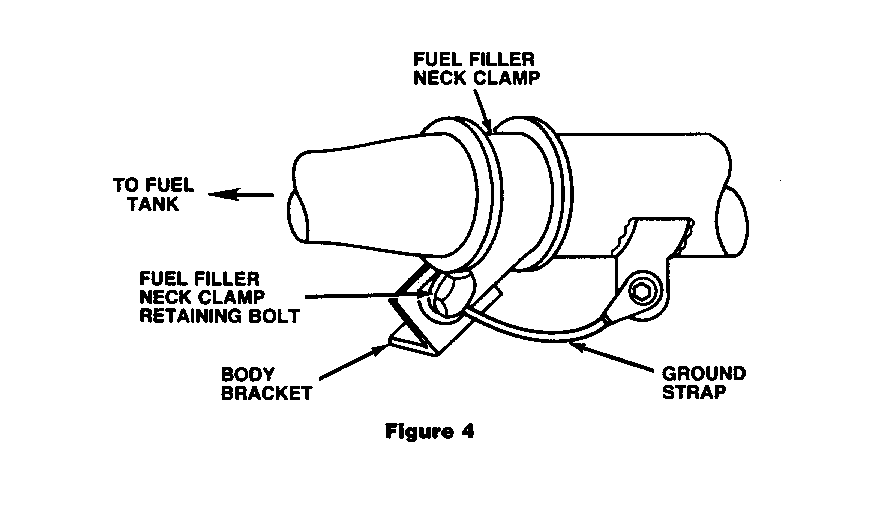CAMPAIGN:FUEL FILLER NECK WELD INSPECT/REPLACE PROCEDURE

PRODUCT SAFETY CAMPAIGN 88-C-10 FUEL FILLER NECK WELD
MODELS AFFECTED 1988 Pontiac LeMans ---------------
TO: ALL PONTIAC DEALERS
The National Traffic and Motor Vehicle Safety Act, as amended, provides that each vehicle which is subject to a recall campaign of this type must be adequately repaired within a reasonable time after the owner has tendered it for repair. A failure to repair within sixty days after tender of a vehicle is prima facie evidence of failure to repair within a reasonable time.
If the condition is not adequately repaired within a reasonable time, the owner may be entitled to an identical or reasonably equivalent vehicle at no charge, or to a refund of the purchase price less a reasonable allowance for depreciation.
To avoid having to provide these burdensome solutions, every effort must be made to promptly schedule an appointment with each owner and to repair their vehicle as soon as possible. As you will see in reading the attached copy of the letter that is being sent to owners, the owners are being instructed to contact the Pontiac Customer Assistance Center if their dealer does not remedy the condition within five days of the mutually agreed upon service date. If the condition is not remedied within a reasonable time, they are instructed on how to contact the National Highway Traffic Safety Administration.
DEFECT INVOLVED
General Motors has determined that some 1988 Pontiac LeMans model vehicles fail to conform to the requirements of Federal Motor Vehicle Safety Standard (FMVSS) 301, "Fuel System Integrity." The fuel filler neck assembly may have been incompletely welded. This could allow fuel to leak from the filler neck assembly. In the event of a collision impact, a leaky filler neck assembly could allow fuel spillage in excess of the amount prescribed by FMVSS 301. Fuel spillage during and after a collision could result in a fire. To correct this noncompliance, dealers are to inspect involved vehicles for potential filler neck leaks and, if necessary, replace the filler neck assembly.
VEHICLES INVOLVED
Involved are certain 1988 Pontiac LeMans model vehicles produced within the following VIN breakpoints:
PLANT FROM THROUGH ----- ---- ------- Pupyong (Korea) JB300001 JB372710
Involved vehicles have been identified by Vehicle Identification Number Computer Listings. Computer listings contain the complete Vehicle Identification Number, owner name and address data, and are furnished to involved dealers with the campaign bulletin. Owner name and address data furnished will enable dealers to follow up with owners involved in this campaign.
These listings may contain owner names and addresses obtained from State Motor Vehicle Registration Records. The use of such motor vehicle registration data for any other reason is a violation of law in several states. Accordingly, you are urged to limit the use of this listing to the follow-up necessary to complete this campaign. Any dealer not receiving a computer listing with the campaign bulletin has no involved vehicles currently assigned.
OWNER NOTIFICATION
Owners will be notified of this campaign on their vehicles by Pontiac Division (see copy of owner letter included with this bulletin).
DEALER CAMPAIGN RESPONSIBILITY
Dealers are to service all vehicles subject to this campaign at no charge to owners, regardless of mileage, age of vehicle, or ownership, from this time forward.
Whenever a vehicle subject to this campaign is taken into your new or used vehicle inventory, or it is in your dealership for service in the future, you should take the steps necessary to be sure the campaign correction has been made before reselling or releasing the vehicle.
Owners of vehicles recently sold from your new vehicle inventory are to be contacted by the dealer, and arrangements made to make the required correction according to instructions contained in this bulletin.
This bulletin is notice to you that the new motor vehicles included in this campaign may not comply with the standard identified above. Under Section 108 of the National Traffic and Motor Vehicle Safety Act, it is illegal for a dealer to sell a new motor vehicle which the dealer knows does not comply with an applicable Federal Motor Vehicle Safety Standard. As a consequence, if you sell any of these motor vehicles without first performing the campaign correction, your dealership may be subject to a civil penalty up to $1,000 for each such sale.
PARTS INFORMATION
Parts required to complete this campaign are to be obtained from General Motors Service Parts Operations (GMSPO). To ensure these parts will be obtained as soon as possible, they should be ordered from GMSPO on a "C.I.O." order with no special instruction code, but on an advise code (2).
Quantity/ Part Number Description Vehicle ----------- ----------- --------- 90232842 Neck - Fuel Tank Filler Two-Door Hatchback Only 1-As Required
90232835 Neck - Fuel Tank Filler Four-Door Sedan Only 1-As Required
Notice: There are approximately 72,600 vehicles involved in this campaign (55% 2-door & 45% 4-door). It is estimated that only 290 vehicles (0.4%) will require filler neck replacement. Order parts only as required.
SERVICE PROCEDURE
Fuel Filler Neck Leak Test Procedure
1. Disconnect negative battery cable.
2. Ensure fuel tank cap is fully installed (clicks when rotated in a clockwise direction).
3. Raise vehicle on hoist.
4. Disconnect fuel tank-to-evaporative canister line at hose connection located at left hand (driver) side of vehicle at floor/sill area forward of fuel tank (See Figure 1).
5. Connect hand operated vacuum/pressure pump to evaporative canister line to fuel tank (See Figure 1) and apply between 1 and 1-1/2 P.S.I. pressure to this line.
Notice: Depending upon amount of fuel in fuel tank, varying lengths of time will occur before 1 P.S.I. threshold pressure will be obtained. The less fuel in the tank, the longer the time to reach the desired pressure. Under some circumstances, such as a large leak in the system, it will not be possible to raise the pressure to the 1 P.S.I. level (See Step 7).
6. Upon reaching a pressure between 1 and 1-1/2 P.S.I., cease pumping and check to see that pressure in system is maintained by noting initial gauge reading (1 to 1-1/2 P.S.I.), wait 2 minutes, note gauge reading again.
7. In the event of an inability to obtain a 1 P.S.I. pressure reading or inability to maintain pressure, apply liquid soap or equivalent to all connections between vacuum/pressure pump and fuel filler cap. Applying further pressure with hand pump (not exceeding 1-1/2 P.S.I.) visually inspect connections for leaks.
8. Repair leaks at connections by tightening hose clamps or replacing parts as necessary. Return to Step 5 and repeat leak check though Step 6.
9. If loss of pressure still occurs, recheck hose connections for a leak. Correct any remaining leaks at connections. If no leaks occur at connections and pressure loss still occurs, replace fuel filler neck (see Parts Information for correct filler neck P/N, based on body style) by following Fuel Filler Neck Replacement Procedure and torque specifications detailed below.
10. If no pressure loss is observed, fuel filler neck does not require replacement. Disconnect vacuum/pressure pump from vehicle and reconnect fuel tank-to-evaporative canister hose and reconnect negative battery cable.
11. Install Campaign Identification Label.
Fuel Filler neck replacement procedure
12. Lower vehicle on hoist. If fuel level indicated on gauge is more than 5/8 full, remove fuel to that level.
When removing fuel:
-Have a dry chemical (Class B) fire extinguisher near the work area.
-Use a hand operated pump device to drain fuel to appropriate level. Save in a clean container for reuse.
CAUTION:
Never drain or store gasoline in an open container due to the possibility of fire or explosion.
13. Remove fuel filler cap and remove three (3) screws - fuel filler neck to body (See Figure 2).
14. Raise vehicle on hoist.
15. Release clamps at fuel filler hose to fuel filler neck and fuel tank vent hose to fuel filler neck (See Figure 3).
16. Disconnect two hoses from fuel filler neck.
Notice: Some residual fuel may be present in fuel filler neck/hose and will drain out as larger of two hoses is disconnected.
17. Disconnect electrical ground wire from fuel filler neck assembly (See Figure 4).
18. Remove fuel filler neck clamp retaining bolt (See Figure 4).
19. Remove fuel filler neck cover panel located in rear right hand (passenger side) wheel house and retained by four (4) nuts.
20. Remove fuel filler neck assembly from vehicle.
21. Remove fuel filler neck clamp. and gasket from fuel filler neck assembly. These parts are to be reused with new fuel filler neck assembly.
22. Install gasket and clamp to replacement fuel filler neck.
23. Install replacement fuel filler neck following above removal procedure in reverse order.
24. Reconnect negative battery cable.
25. Install Campaign Identification Label.
Installation Torque Specifications As Follows:
Step
18 Fuel Filler Neck Clamp Retaining Bolt - 12.5 Nm (9.2 lb. ft.)
15 Hose Clamps - Fuel Filler Neck (2) - 2.5 Nm (1.8 lb. ft.)
13 Screw - Fuel Filler Neck To Body (3) - 4.0 Nm (2.9 lb. ft.)
4 Hose Clamp - Fuel Tank To Evap. Canister - 2.5 Nm (1.8 lb. ft.)
CAMPAIGN IDENTIFICATION LABEL
Each vehicle corrected in accordance with the instructions outlined in this Product Campaign Bulletin will require a "Campaign Identification Label." Each label provides a space to include the campaign number, the five (5) digit dealer code of the dealer performing the campaign service and the date the vehicle was campaigned. This information may be inserted with a typewriter or a ball point pen. Install the label only on a clean, dry surface of the radiator baffle where it is readily visible (additional campaign labels are available on stationery order as Form 7901-709).
CLAIM INFORMATION
A separate repair order must be kept for each vehicle. A completed warranty claim is to be kept as a permanent record of completion.
DEALERS SHOULD SUBMIT WARRANTY CLAIMS FOR CREDIT IN THEIR NORMAL MANNER WHEN THEY PERFORM THE SERVICE AS FOLLOWS: Other Failure Labor Labor Labor Operation Code Operation Hours Hours --------- ------- --------- ----- ----- Inspect For Leaks, 96 V4750 0.5 0.1 No Further Action Required
Inspect For Leaks, 96 V4751 1.3 0.1 Replace Fuel Filler Neck
*In addition, dealership will receive 0.1 hours credit for dealer administrative services associated with this campaign. The 0.1 hours allowance is to be entered in the "Other Labor Hours" field with each campaign repair listed for credit. This entry will not require authorization.
FAILURE CODE 96 MUST BE USED WITH THIS LABOR OPERATION.
Dealers will be credited via Warranty Document or Terminal Transmission, whichever is their normal method of submission for payment. Claim must contain all information required and should list the proper labor operation as outlined.
RECORDING COMPLETION
Repairs submitted for vehicles not involved in this campaign will not be paid.
Campaign completion will be recorded from "PROPERLY COMPLETED AND PAID WARRANTY CLAIMS." Owners are being asked to present the owner reply card for identification to their dealer at the time they bring in their vehicle to have the campaign performed.




General Motors bulletins are intended for use by professional technicians, not a "do-it-yourselfer". They are written to inform those technicians of conditions that may occur on some vehicles, or to provide information that could assist in the proper service of a vehicle. Properly trained technicians have the equipment, tools, safety instructions and know-how to do a job properly and safely. If a condition is described, do not assume that the bulletin applies to your vehicle, or that your vehicle will have that condition. See a General Motors dealer servicing your brand of General Motors vehicle for information on whether your vehicle may benefit from the information.
